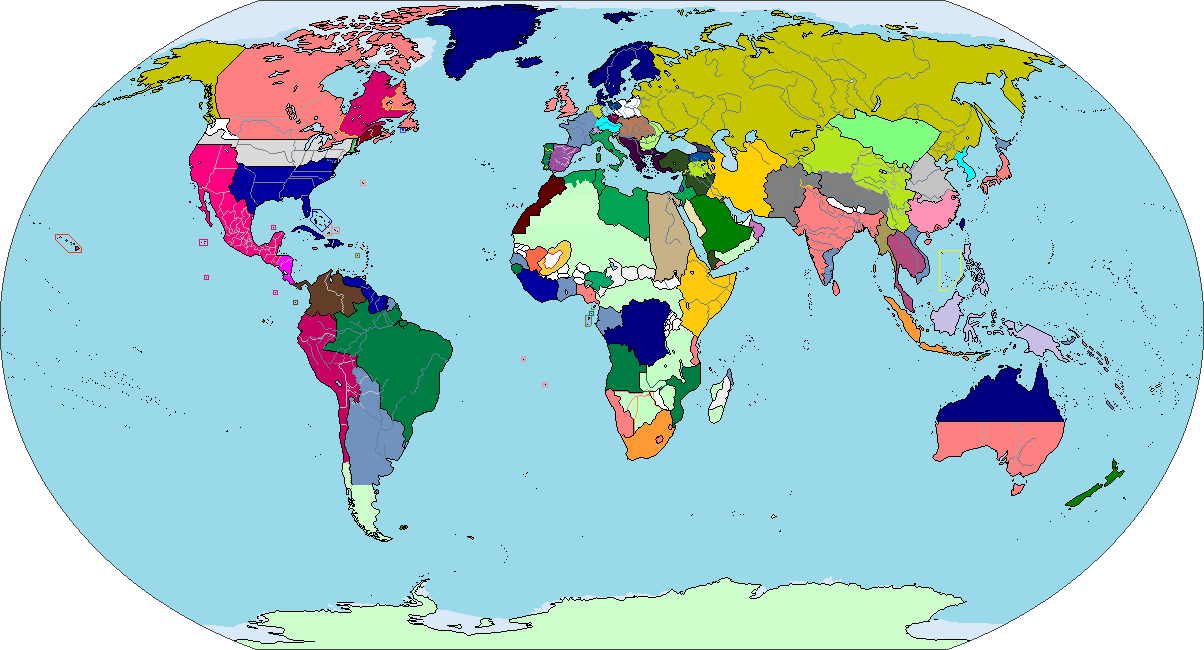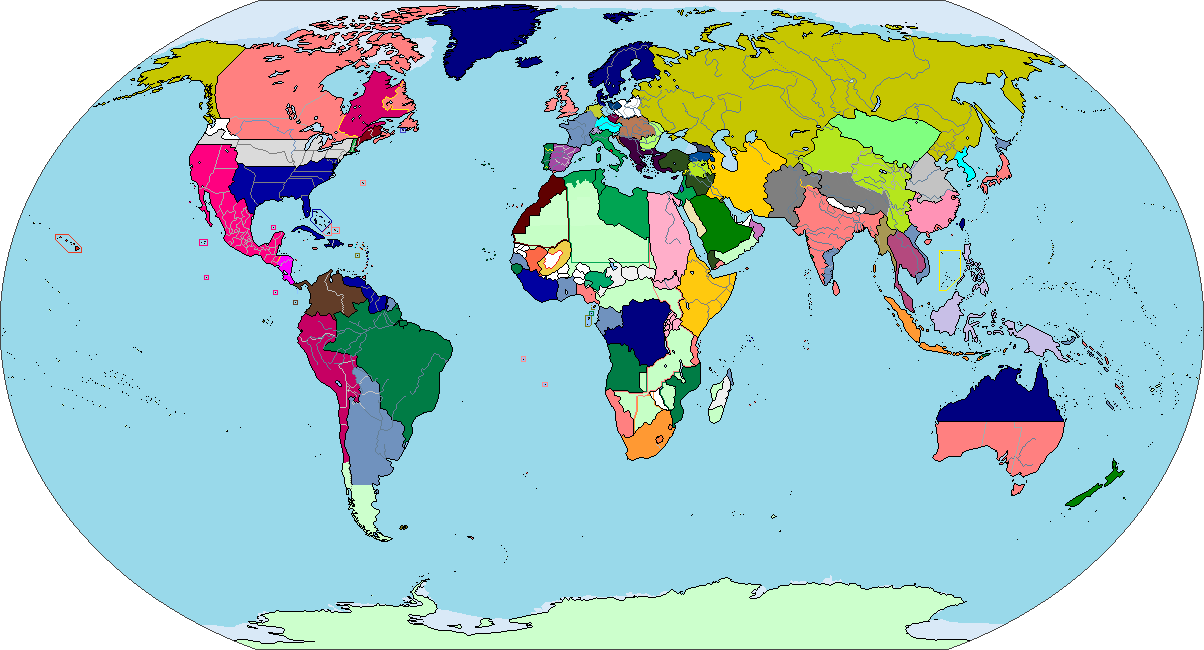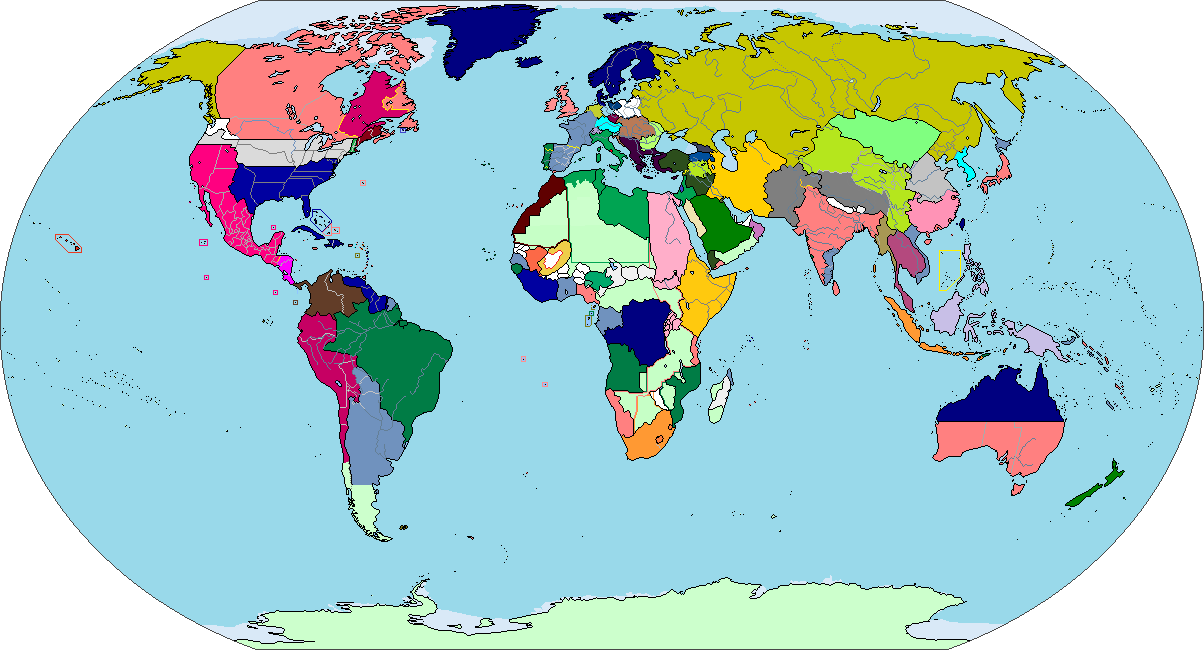The 1860s
The British Empire a Time of purple tears
For King Richard IV the 1860s would begin as a good time that soured for the Royal family very quickly. The good times would start on August 27 1860 when the last Princely Army in India would surrender to the British Army and bring an end to the. Great Brush War as the papers in London were calling it. The peace in India would be followed by most of the European Colonial powers agreeing to attend the Congress of London to settle the Settlement of Africa. A big win was the agreement of the Commonwealth of American States to attend. However this is where the good times would stop.
The Congress of London July 15th to October 30th 1863.
The Congress of London was called to prevent another war from happening between the Colonial powers over who got what I'm Africa. However, only the European and the American nations were invited the Cape Empire, Ethiopia, Egypt and Morocco were all ignored. Once the Congress began it quickly became apparent that every attendee was seeking the most advantages for his nation. For three months the delegates went back and Forth over who was to get what. Finally in mid October a outline of a deal was formed.
The Commonwealth territories in West Africa would be recognized outside of them and the Portuguese Territories in that area West Africa and Morocco as well as Madagascar were placed into the Franco Spanish sphere of influence. Swedish Congo was Recognized as well. The Italians were allowed to push their North African claims South to Lake Chad. The British and Portuguese would agree to partition the Zambia River Valley. Tye Portuguese received the bulk of it but the British Zambia colony would split the Portuguese colony into two parts. Ethiopia was also placed in the Portuguese sphere of influence. The British would place Egypt and The Cape Empire onto their sphere of influence. As well as a large collection of colonies connecting the two.
With that done the Treaty of London was signed and everything was settled right? Well yes and no. The Treaty of London was signed and would be quickly ratified by the signatory nations. Then the blow back started. Morocco, and Ethiopia rejected the Treaty of London as did the Russian Empire and the Ottoman Empire. While the French would move to undercut the Treaty just two years later.
In response to this Rejection was shock then threats of conflict. Russia would move five divisions to Ethiopia which it considered its Religious Ally. The Portuguese, not wanting to fight a war with Russia, would make a deal with the Tsar. The Russians would buy the Portuguese Treaty right to Ethiopia for 2 million rubles. The next response to the Rejection of the Treaty was the French to the Moroccan Rejection of the Treaty. France would send an army of 60,000 men and a fleet of seventy ships to brow beat the Sultan into capitulation. This didn't end well for France as the Moroccan Fleet almost completely iron hulled and iron Armored ships would meet the Franco-Spanish Fleet off of the Moroccan coast and would soundly defeat the French. Meanwhile the French Army that had already landed would meet the Moroccans in battle at the city of Larache. Here the French would be soundly defeated on land. With the French army being forced to retreat to Cetua. These twin defeats would force France to accept the Treaty of Tangiers in which the Franco-Spanish Empire was forced to surrender all claims to Morocco. This conflict would become known as the Moroccan War of Independence and established Morocco as a nation of the civilized world.
Only the Cape Empire and Egypt would not reject the Treaty of London. However, this was for completely different reasons. The Cape Empire recognized that it existed only as long as Britain allowed it to. However, with the marriage of Queen Sophie to Charles the eldest son of the Duke of Mann the Cape empire sought to make itself the Junior partner to the British Empire rather than its Client state.
The Royal Tragedy
February of 1865 a year and a half Congress of London Forty four year old Crown Prince Henry Edward Alexander Hanover along with his wife and four children were traveling north from London to Scotland on board the Royal Express. The winter had been especially harsh and unbeknown to the train crew a set of switches had been frozen set to a siding. At 9:30pm the Royal express would take the switch and leave the mainline on to the 65 yard spur track. Unable to stop it would continue on though the bumper at the end of the spur and crash into the woods beyond the end of the line. The Crown prince, his wife and three eldest children would be instantly crushed by the destruction of the coach they were riding in. His youngest daughter Princess Racheal would survive to be found by a troop of household guards two hours later. Yet Racheal would succumb to her own injuries two days later. In a 48 hour period the Heir to the throne and all his children were killed. This was not the worst of the event however. Shortly after the funerals for his son, daughter in law, and four grandchildren were completed a heart broken Richard IV went to lie down. Two hours later the queen would go to check on him and find him lying dead in his bed. The King who had run the helm of the British Empire through its great expansion and its greatest trial since the American Revolution was dead. And so it was that Prince Robert Albert William Duke of Richmond (he had yet to be bestowed the title of Prince of Whales) would become “His Majesty Robert, by the Grace of God, of the United Kingdom of Great Britain and Ireland King, Defender of the Faith, Emperor of India” many in side the court urged him to take William as his regal name. To this Robert would reply “They told my father that Richard was in Ill begotten Regal Name but he kept it and made it the name of possibly the greatest king in our history; I will keep Robert and see if I can make Robert the first half the King that Richard the fourth was.”
As the preparations for the Coronation of Robert got underway many people in British society started asking themselves “Who the Bloody Hell is Prince Robert?”. The Second Child of Richard IV and Queen Sophie Robert was a kind hearted soul as his mother described him. Henry was known for his partying and womanizing even after he was married; Robert was rather shy around women and once he managed to find his wife in Rebecca Wentworth the daughter of the Duke of Richmond, he would remain faithful to her, for the rest of his days. The two of them had a very intimate and close relationship too. This was proven by the fact that by the time Robert took the throne at age Forty they had twelve children and Rebecca who was Thirty six was pregnant with their thirteenth. Beyond their personal life like his elder brother Robert had taken part in the Second War of Spanish Succession. He had served as a Colonel on the Iberian Front whereas his brother had served in Normandy. During the War Robert became known as an officer who valued the lives of the men under his command and would not hang back to save his own neck. During the war Robert was wounded 4 times and returned to service each and every time. When it came to the workings of the government like his elder brother Robert was very much a student of how Richard did things and learned how his father could pull the strings of the Government to get what he wanted done in parliament done. The biggest difference between them was that Richard IV was generally neutral favoring nether Tories, Liberal, or the newly formed Labor Party (1), and Henry was an open Tory, Robert and his wife were both Liberal aligned Robert would try and play it off that he was more neutral than liberal but Rebecca would never make any such claim. Robert Albert William Hanover would be crowned King Robert the first on June 21,1865.
View attachment 720527
King Robert I
Other things
Politically the 1860’s would see the rise of the Labor Party. This party had its roots in Pebeinism however it was a milder form. The Labor Party’s main plank at the time of its forming was to call out the working conditions of the common man, woman, and child in Industrialized Britain and the existence of Colonial Slavery and Bondsmanship that still existed with in the empire. While the Tories and Liberals would continue to dominate the main stage of British Politics Labor would gain its first toe hold in the Parliament and manage to bring up the Imperial Emancipation Act that officially outlawed slavery in the entire Empire not just the British Isles. This Act was personally championed by the Queen Consort.
Military wise the British Army and Navy would adopt the Joint Service Rifle in 1868. This Rifle was a Bolt Action Rifle that took advantage of the Smokeless powder that the French had invented. The Rifle would be known as the Enfield 1868 JSR. It fired a 0.303 caliber bullet and had a locking bolt Action. When it was adopted it was one of the most advanced rifles in the world.
View attachment 720526
- The Labor Party is formed earlier TTL



